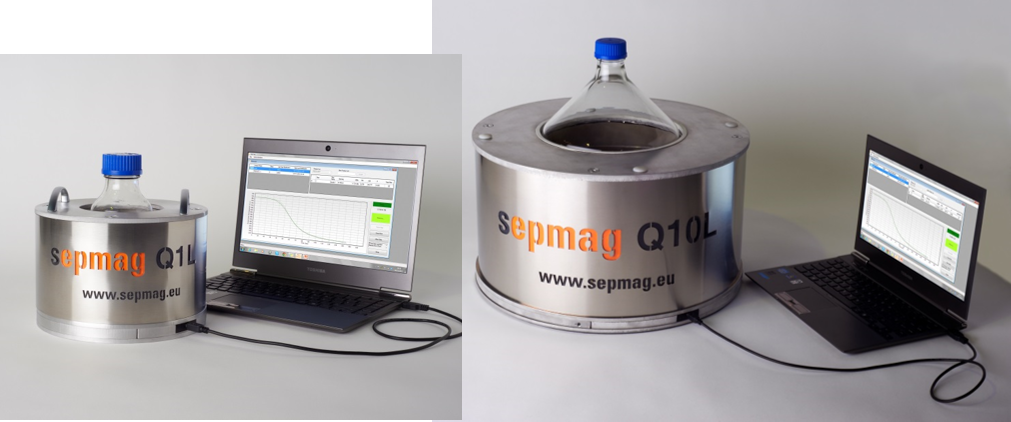The scaling up of a biomagnetic separation process is not an easy task if we use classical magnetic separators. In these devices, the magnetic force over the beads changes with the distance, thus the magnetic force profile is very different at different volumes. However, using advanced biomagnetic separation systems, the magnetic force becomes constant at all the working volume. Then the process scaling up is straightforward: you just need to use systems with the same magnetic force, and you would have the same separation conditions regardless the scale.
Even if physics give as a clear path for the scaling up, the requirements of the life-science industry requires experimental validation and, when possible, the monitoring of every single batch for guarantee the batch-to-batch consistency. Advanced biomagnetic separation systems incorporate electronic hardware and software to optically monitoring every single process. As the suspension is dark due the presence of the magnetic beads, when the separation is complete, the optical properties are the buffer’s ones. Taking advantage of this change of transparency, the built-in sub-system allows checking if the separation is complete at the expected time (i.e. if the dark suspension has become transparent).
As discussed in previous chapters, for a given magnetic force and suspension, the separation time would depend on the vessel diameter. Monitoring the transparency changes of the suspension during biomagnetic separation process allow to determine if the separation is competed at the expected separation time. For a homogenous magnetic force system, the time-dependence of the optical changes has sigmoidal-like shape. Thus, the process can be parameterized and the expected behavior at larger volume can be checked.
With these tools (homogenous magnetic force and optical monitoring), the separation time of the larger volume can be determined by objective criteria -not depending on the subjectivity of a researcher/process engineer- and the success/failure of the scaling-up can easily be validated.
Related news:
- Improved detection of Mycobacterium avium subsp. Paratuberculosis
- Separation time at a larger volume in biomagnetic separation processes
- Microfluidic immunomagnetic cell separation fromwhole blood





